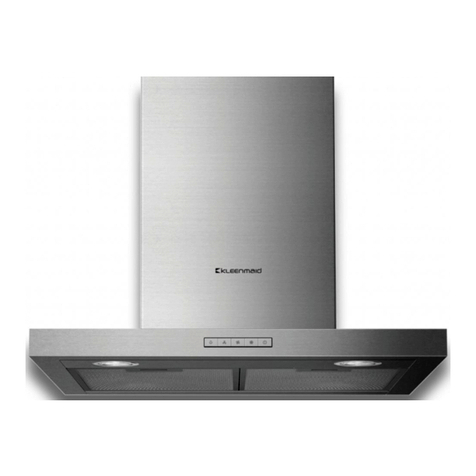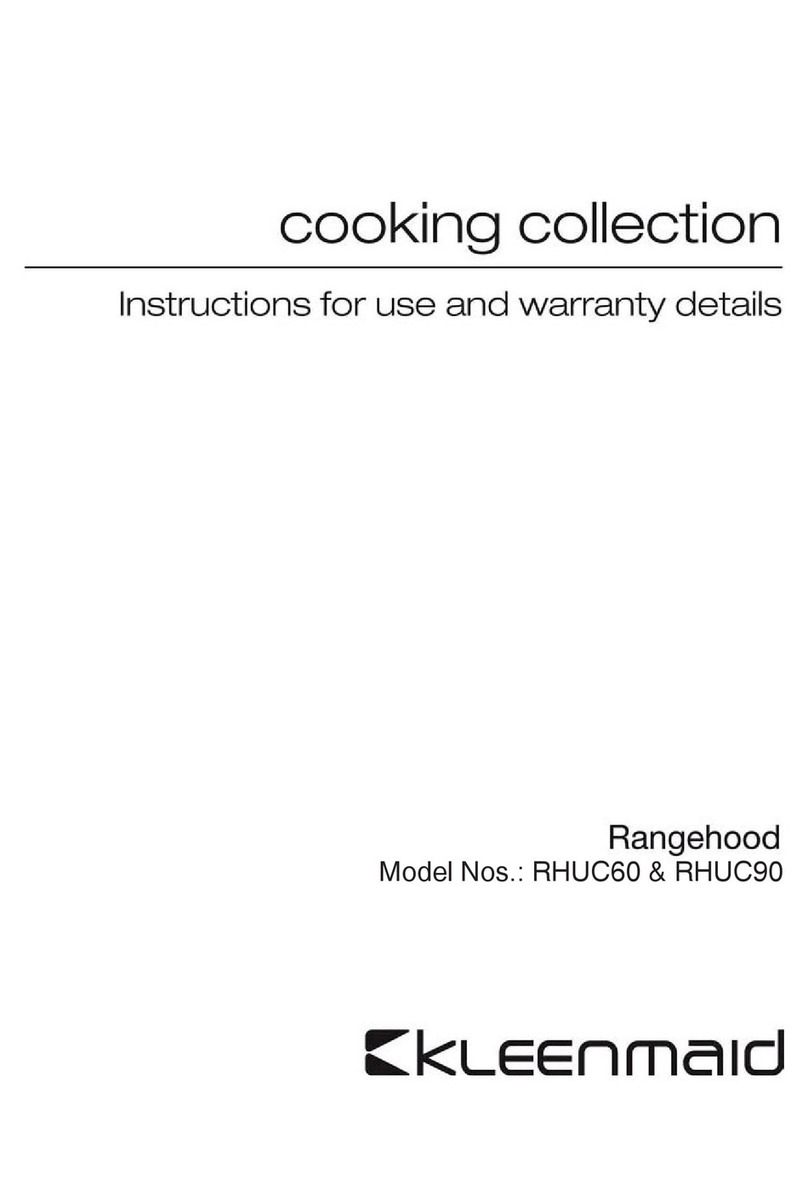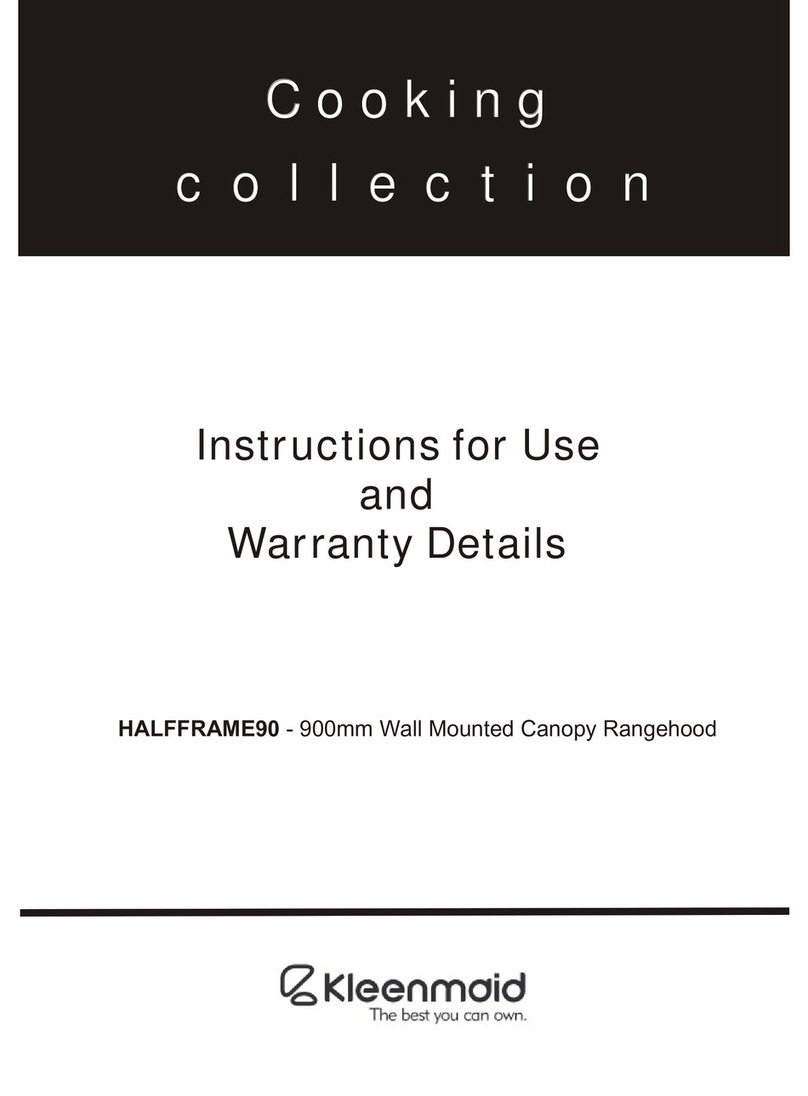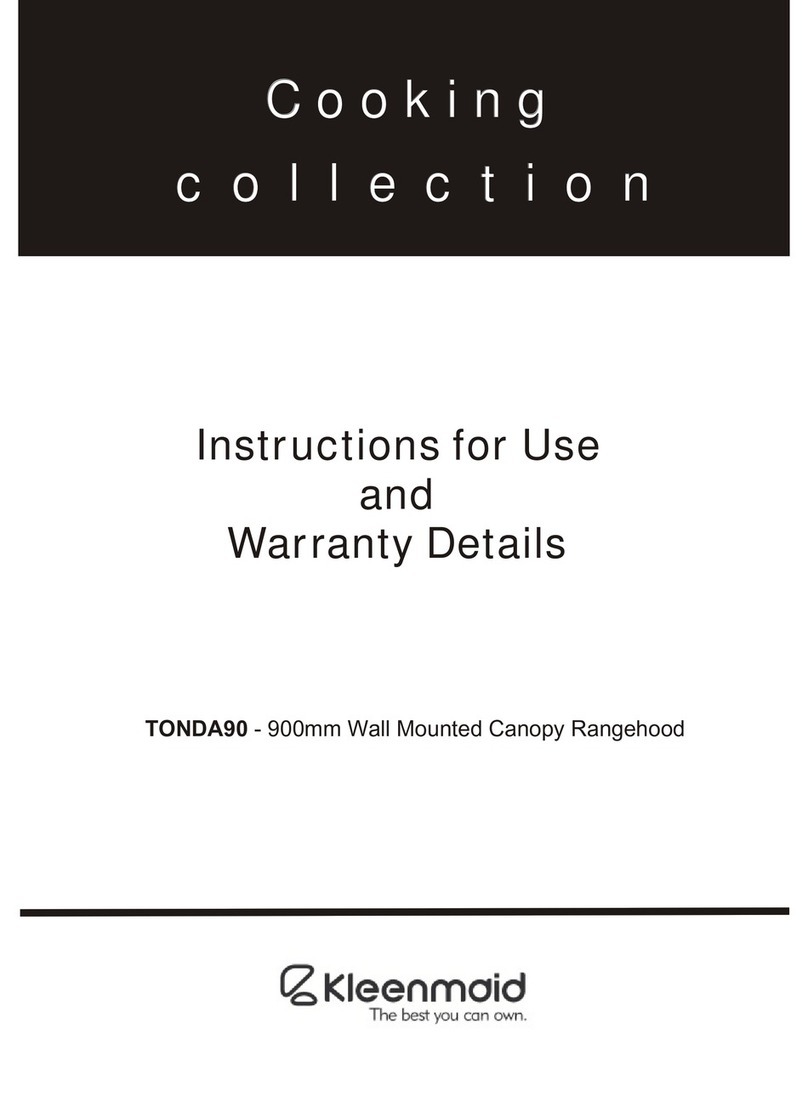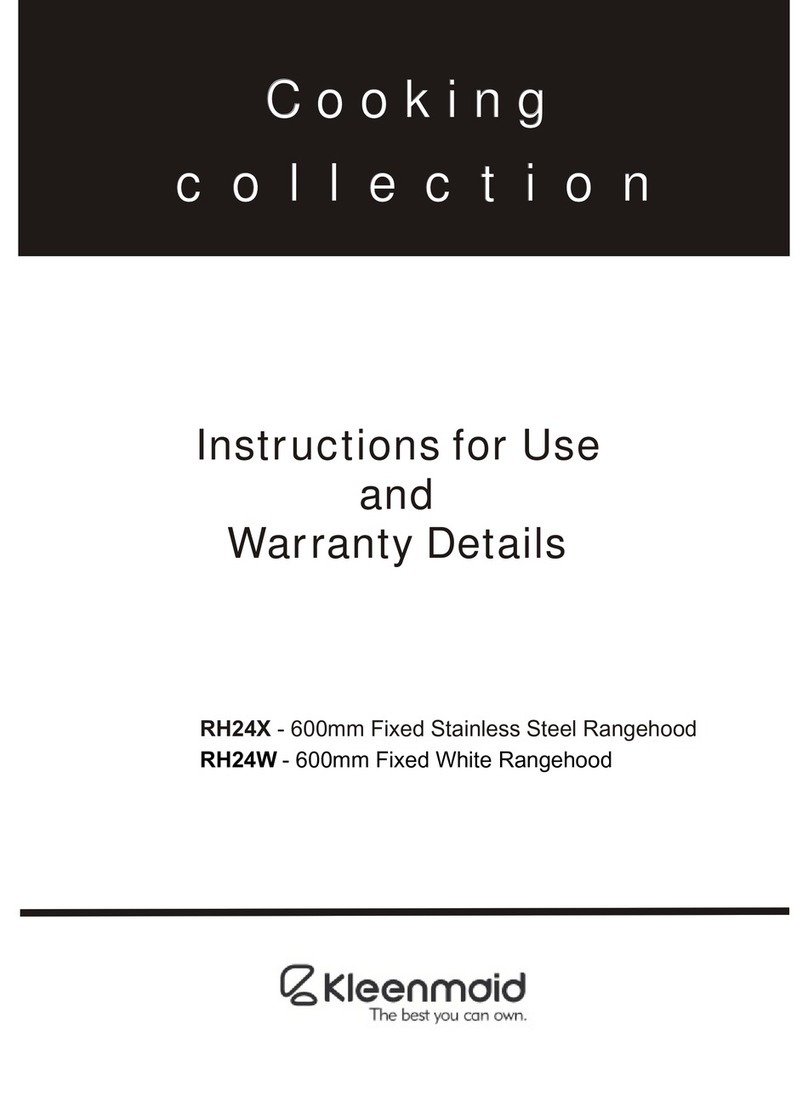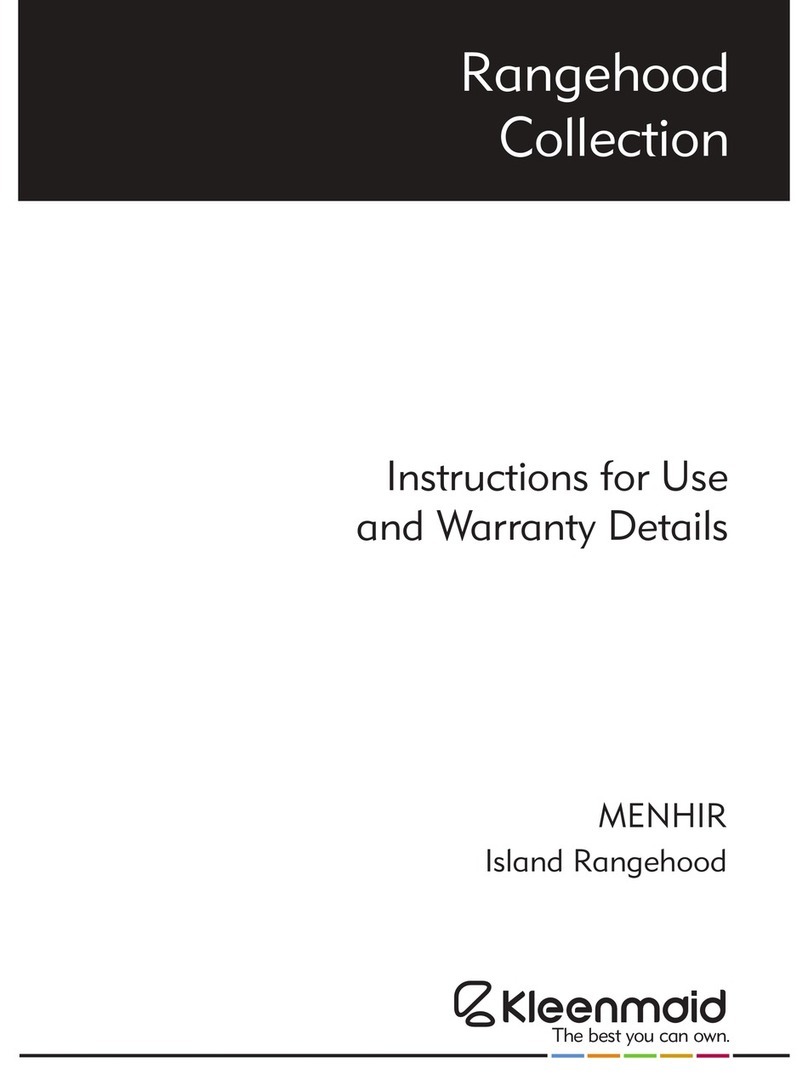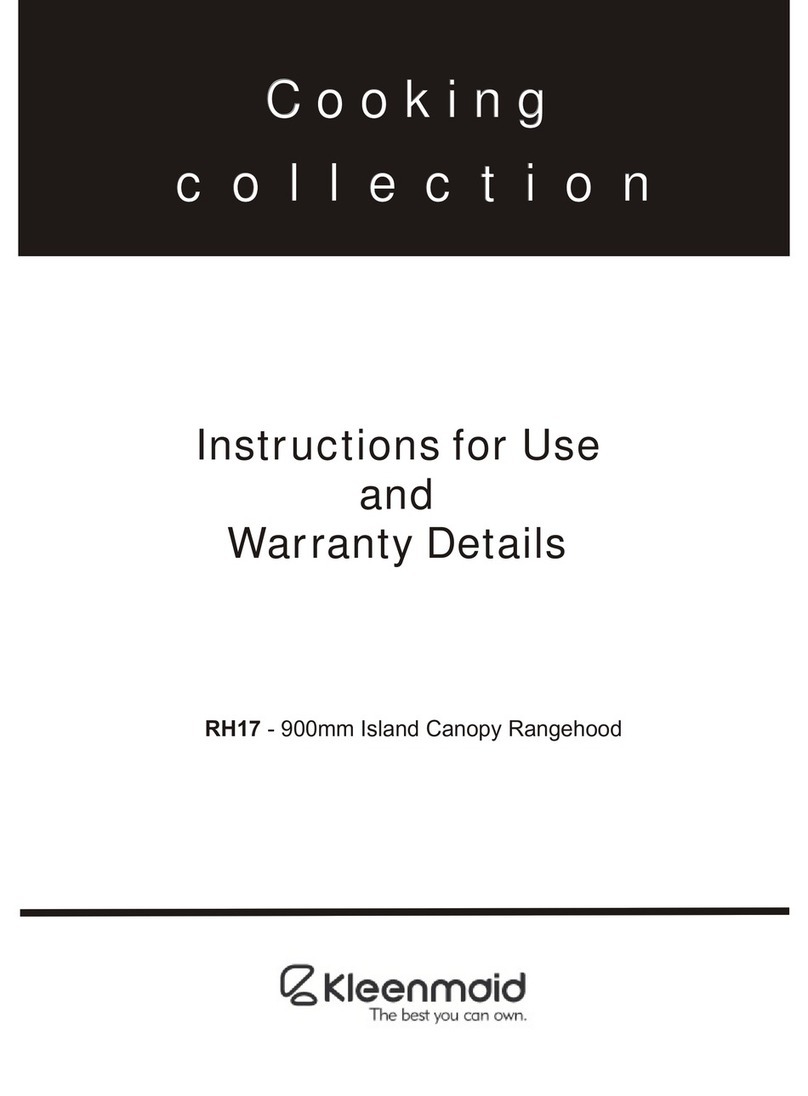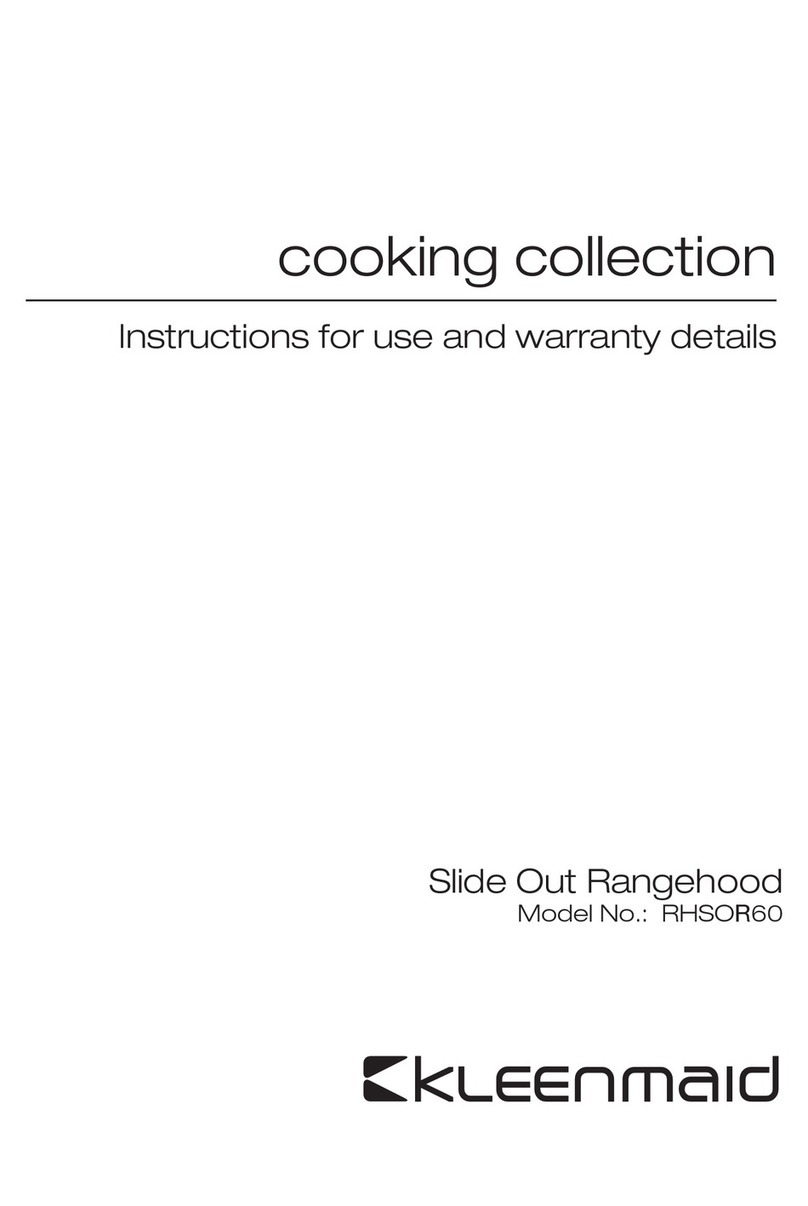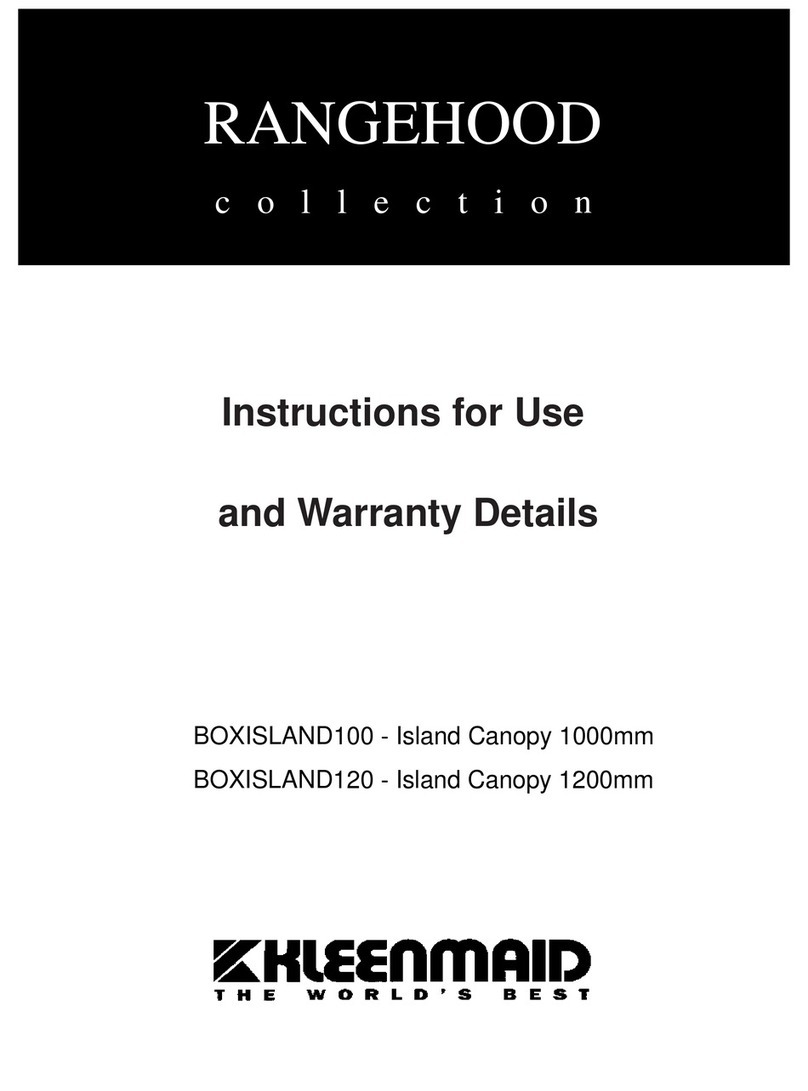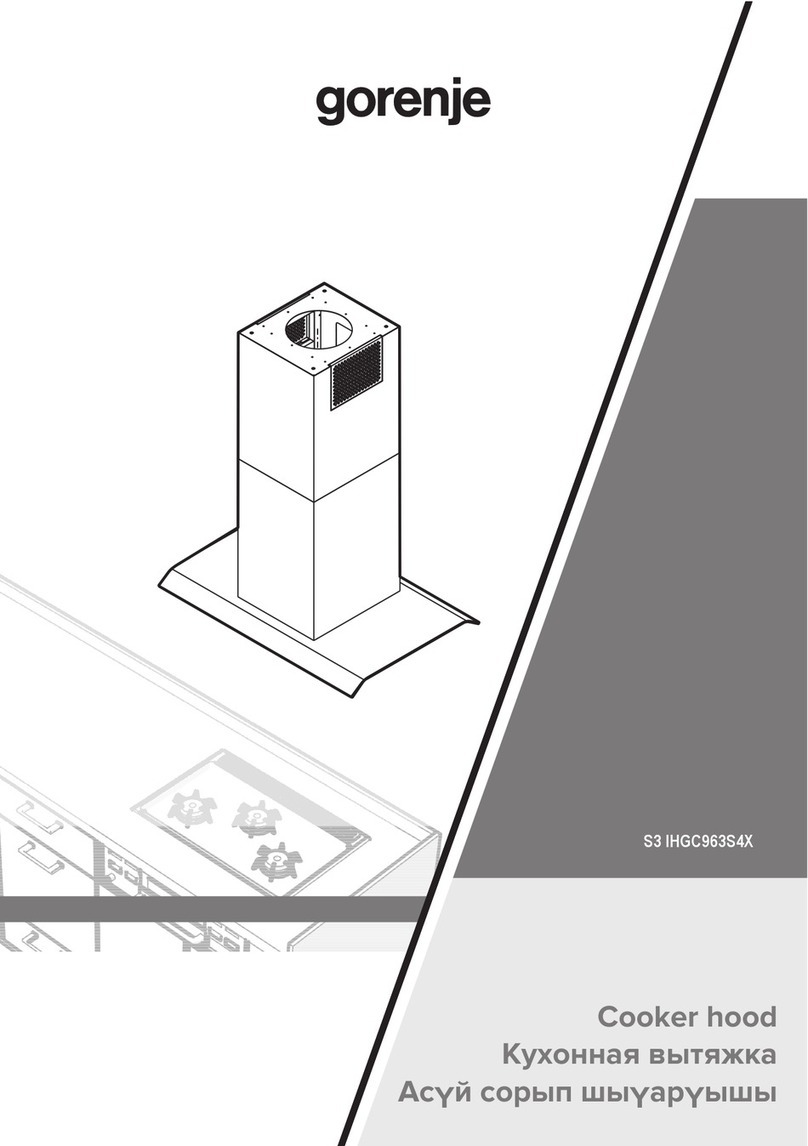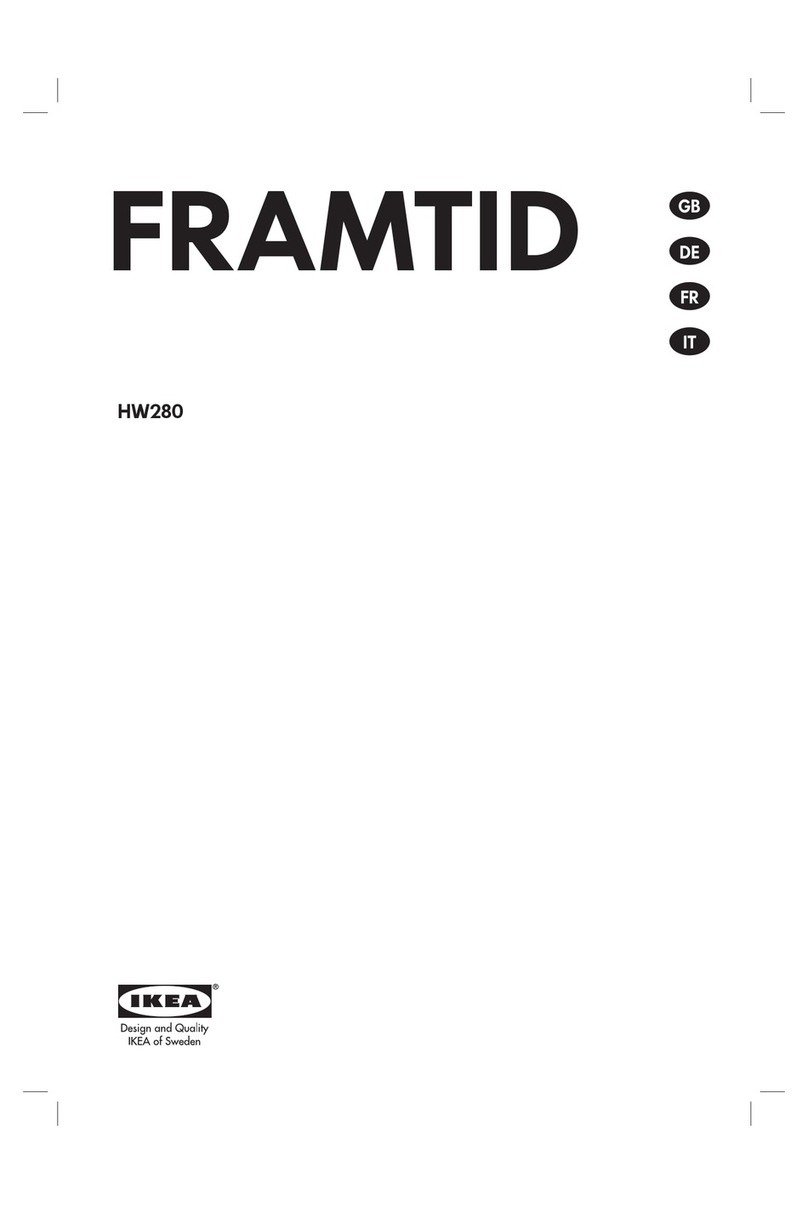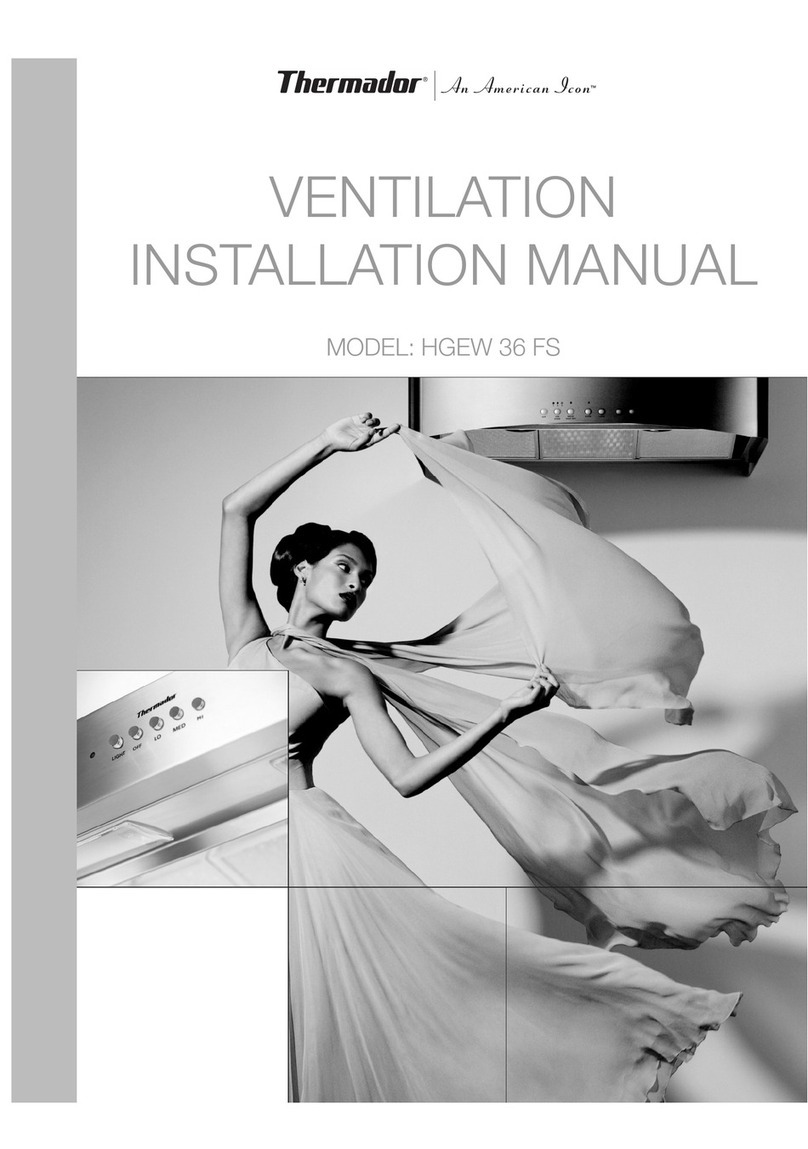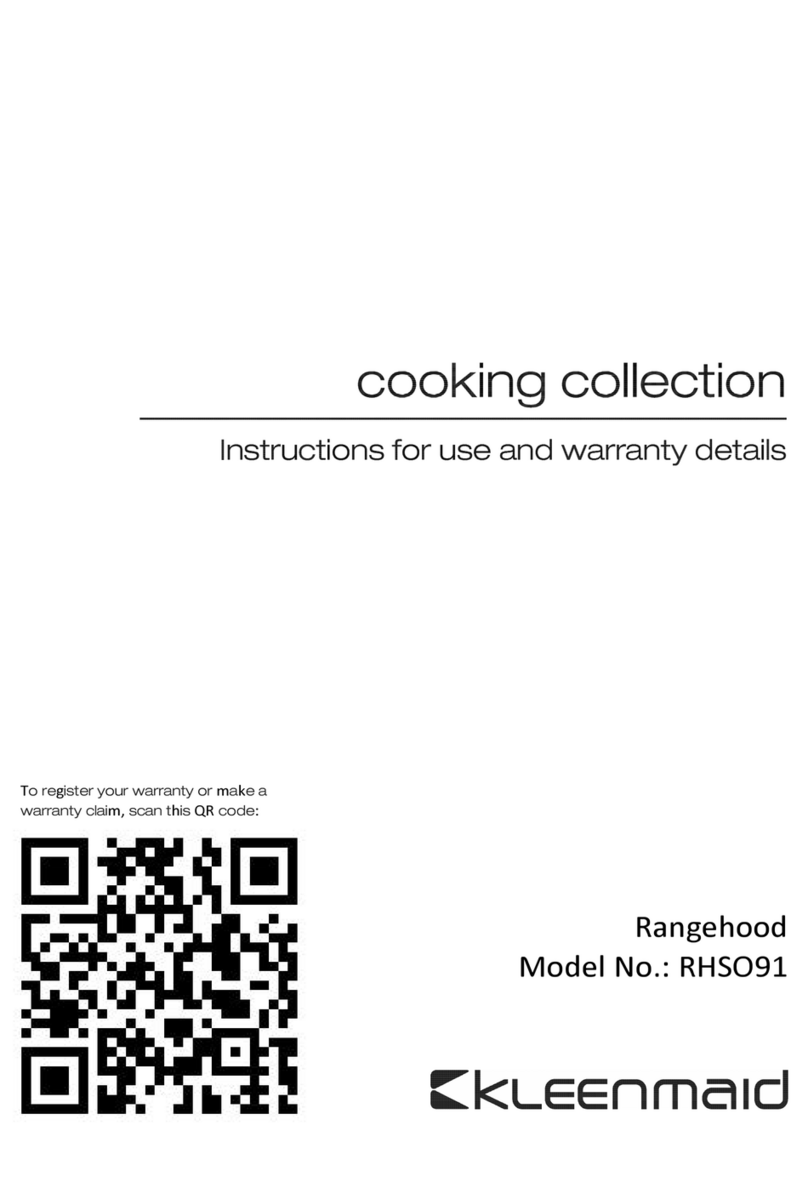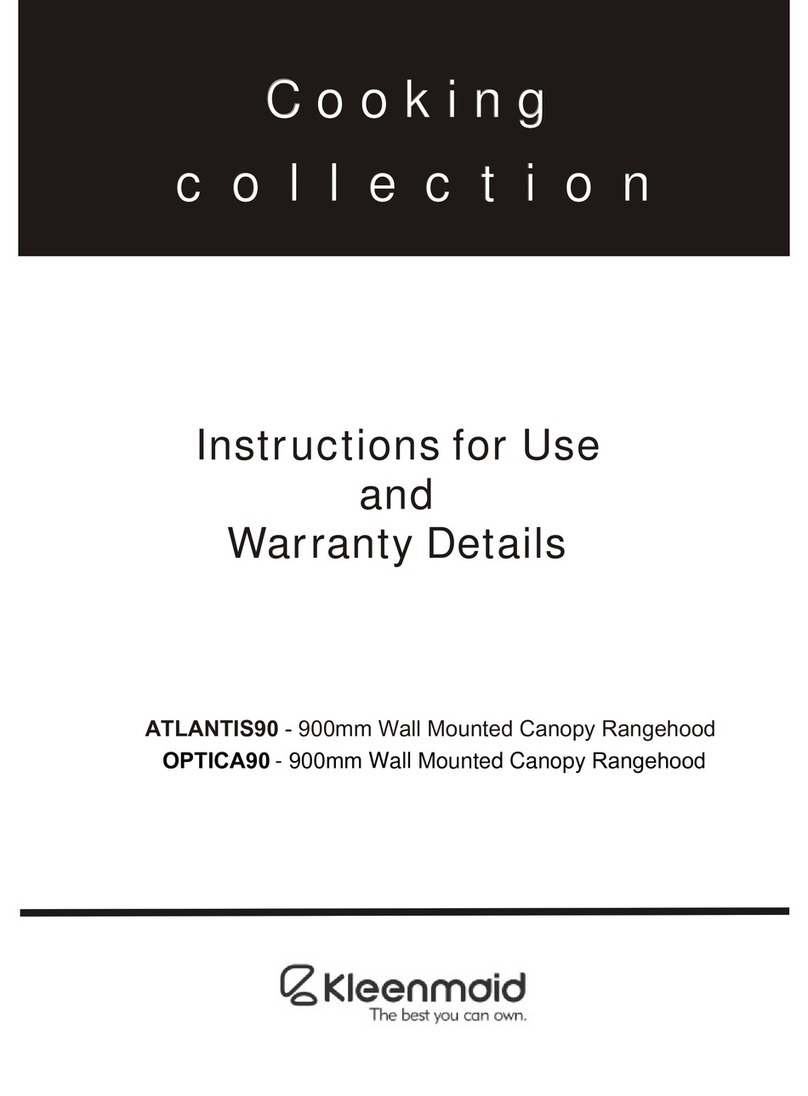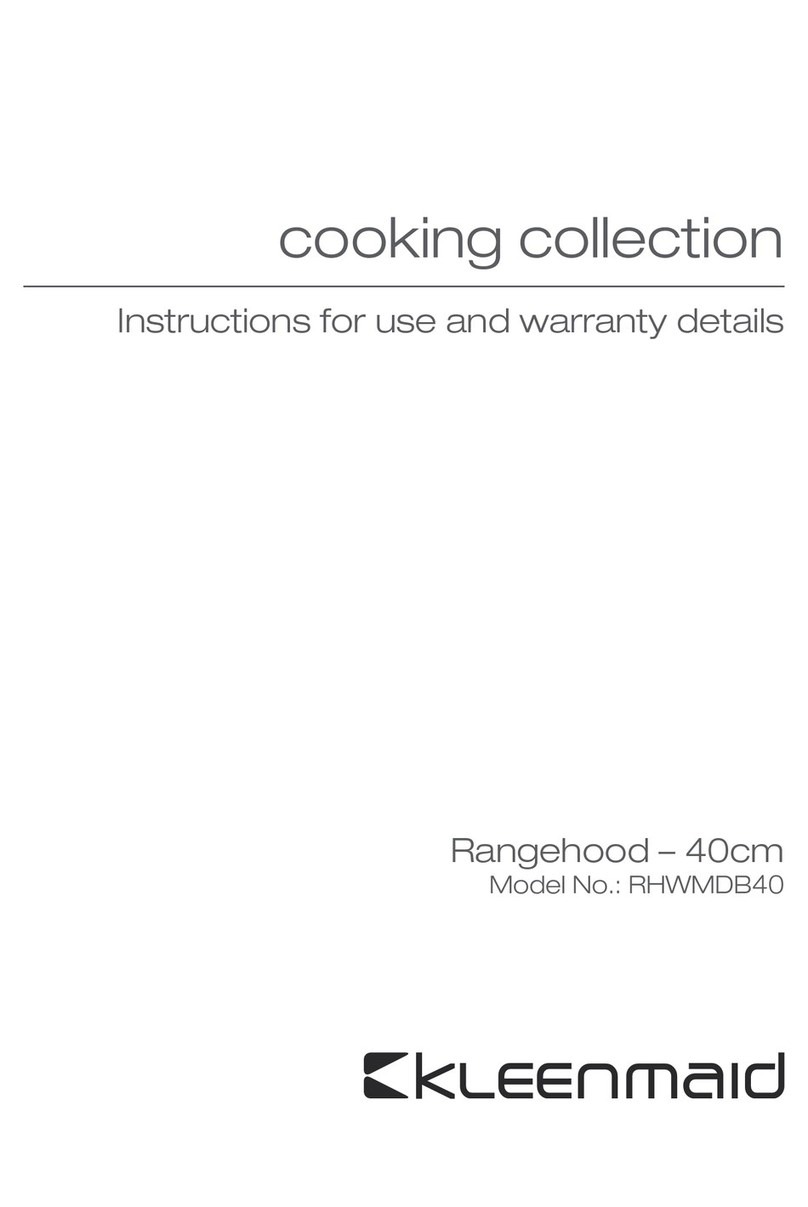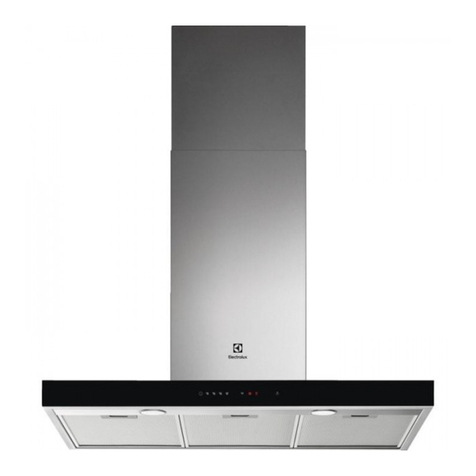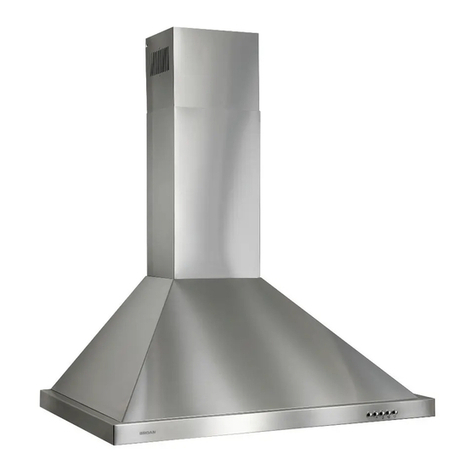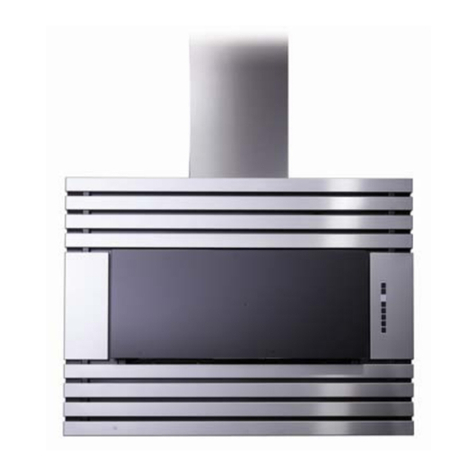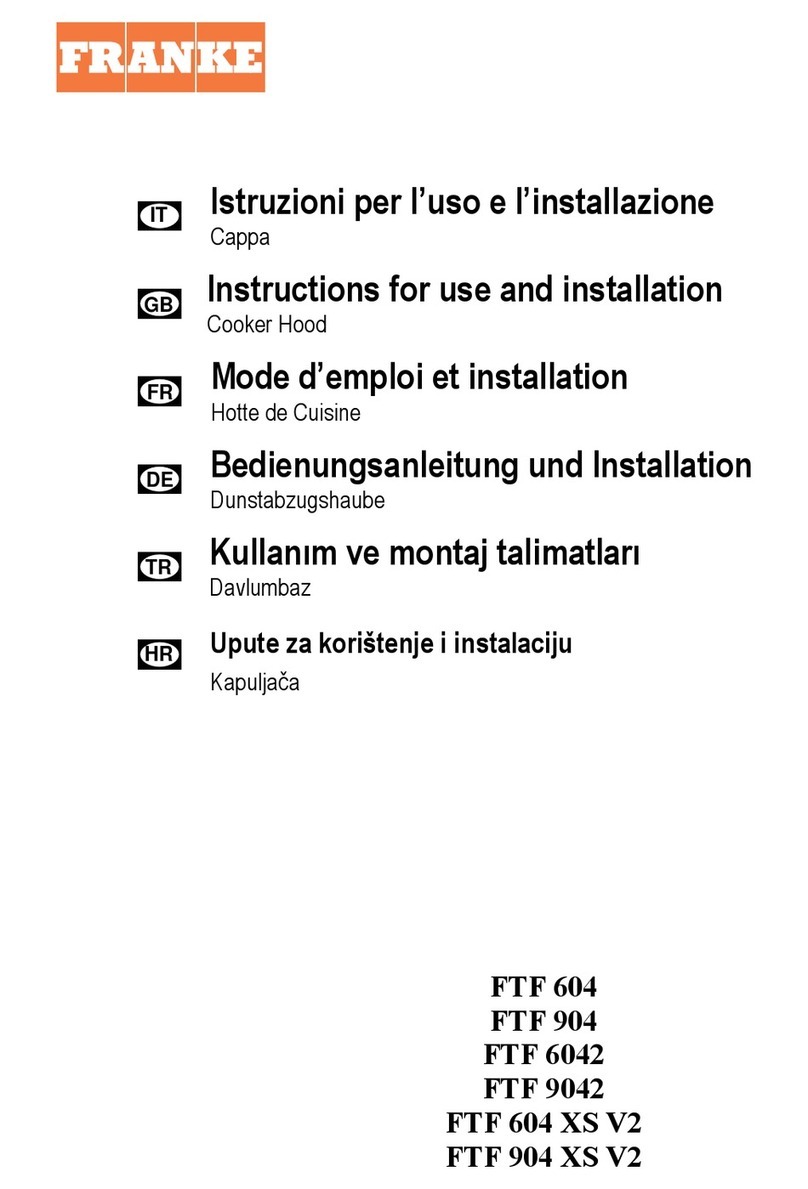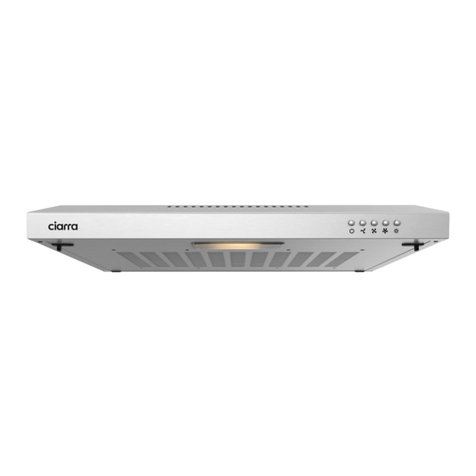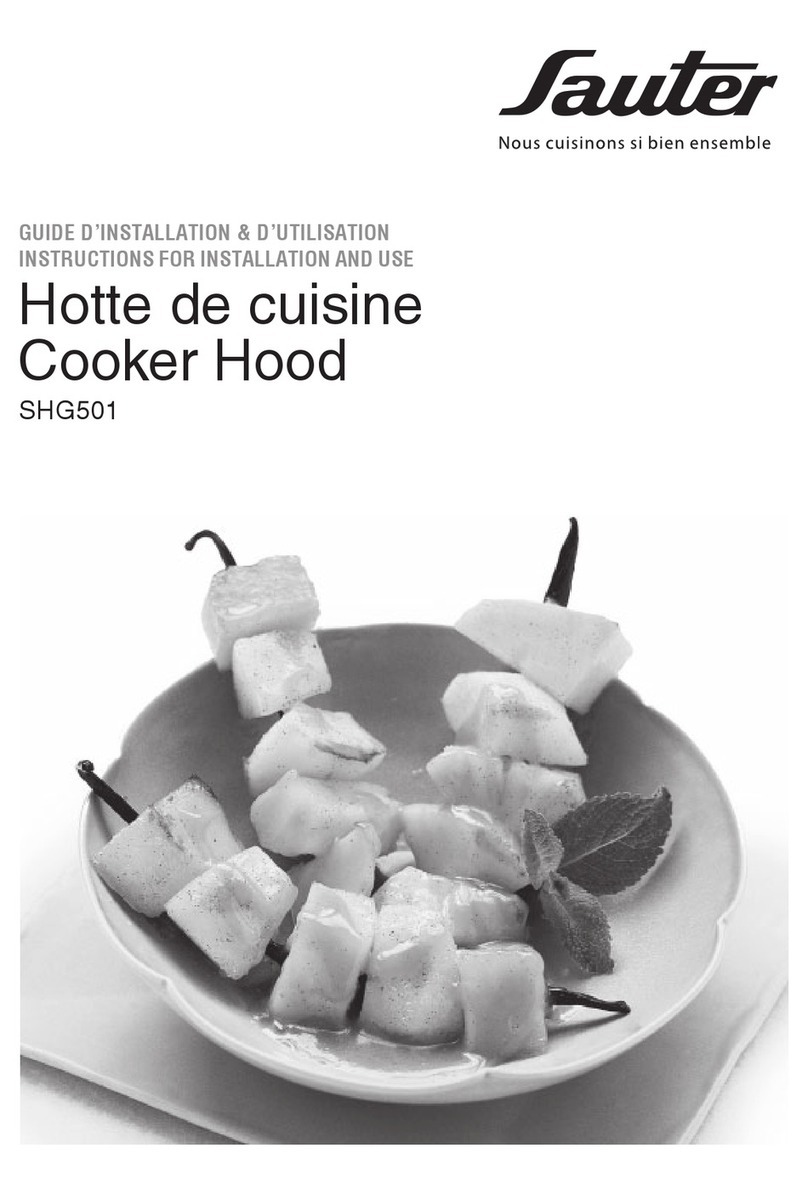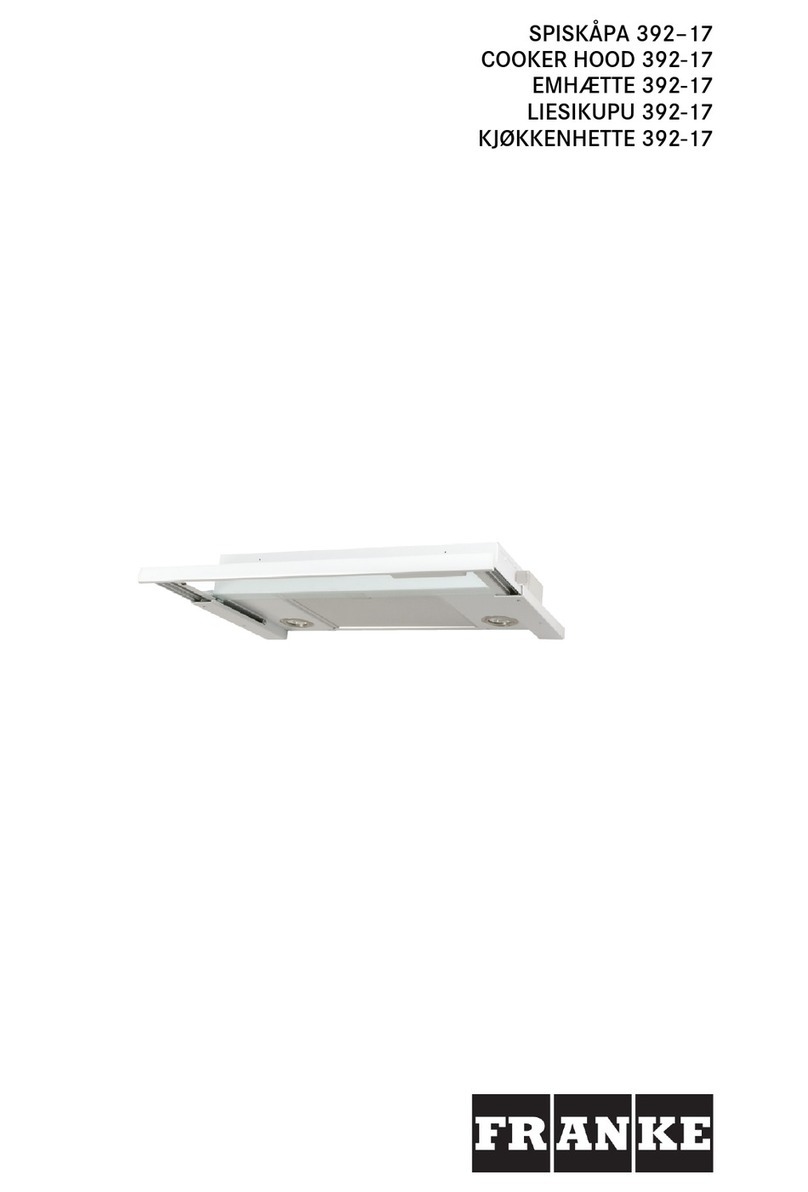6
Pleaserefertothedesignsinthefrontpagesreferencedinthetextby
alphabet letters. Closely follow the instructions set out in this
manual. All responsibility, for any damages or fires caused by not
complyingwiththeinstructionsinthismanual, aretheresponsibility
of the user.
TheRangehoodmustbeplacedataminimumdistanceof50cmfrom
the cooking plane for electric cookers and 65cm for gas cookers.
If the instructions for installation for the gas hob specify a greater
distance, this has to be taken into account.
The Rangehood is equipped with a top air outlet Bfor discharge of
fumestotheoutside(Ductingversion–exhaustpipeandpipefixing
clamps not provided).
If it is not possible to discharge cooking fumes and vapour to the
outside, the Rangehood can be used in the filter version, fitting an
activatedcarbonfilterandthedeflectorFonthesupport(bracket)G,
fumesandvapoursarerecycledthroughthetopgrilleHbymeansof
anexhaustpipeconnectedtothetopairoutletBandtheconnection
ringmountedonthedeflectorF(exhaustpipeandpipefixingclamps
notprovided).
Themodelswithnosuctionmotoronlyoperateinductingmode,and
must be connected to an external suction device (not supplied).
Installation - Fig. 5-6-7
Preliminary information for installing the Rangehood
Assembling the deflector (Fig. 6 - 3 parts – only for filter
version):
The three parts should be fixed with two screws, the deflector
extension is adjustable and should correspond to the width of the
chimney flue support, to which it is then fixed.
Duringelectricalconnectionensurethepowersupplyisdisconnected
at the main switch.
ExpansionwallplugsareprovidedtosecuretheRangehoodtomost
types of walls/ceilings. However, a qualified technician must verify
suitabilityofthematerials inaccordancewith thetypeofwall/ceiling.
The wall/ceiling must be strong enough to take the weight of the
Rangehood.
Do not tile, grout or silicone this appliance to the wall. Surface
mounting only.
1. AdjustextensionoftheRangehoodsupportstructure,asthefinal
height of the Rangehood depends on this, and remember that
withinstallationcompletedtheRangehoodmustbeatleast50cm
above the cook-top for electric cookers and 65 cm for gas
cookers.
2. a. Fix the two sections of the structure using eight screws.
b. If the hood is provided with extensions longer than the
minimum,fitthereinforcementbracketStotheframe,using four
screws.
3. Place the ceiling hole diagram directly above the cook-top (the
centerofthediagrammustmatchthecenterofthecook-topand
theedgesmustbeparalleltothesidesofthecook-top–theside
of the diagram with the wording FRONT corresponds to the
control panel side). Prepare the electrical connection.
4. Drillasshown(holesforwallplugs–plugsforfixture),screwthe
outer screws leaving a space of about 1 cm between the screw
head and the ceiling.
5. Fit an exhaust pipe inside the truss and connect it to the motor
compartment connection ring (exhaust pipe and fixing brackets
arenot supplied).
6. Hook the frame onto the screws (see step 4).
CAUTION!Thesideofthetrusswithconnectionboxcorresponds
to the side of the control panel with hood assembled.
7. Tighten the screws.
8. Insertandtightenanother2screwsintheremainingfreeholesfor
secure fixing.
9. Carry out the electrical connection to the mains power supply,
only turn on the power supply upon completion of assembly.
10. Hookthe Rangehoodontothetruss,ensuringitfitsproperly–to
hook the hood onto the truss partially tighten four screws (see
also step 12).
11. SecuretheRangehoodtothetrussusingtwoscrews;thiswillalso
help center the two sections.
12. Tighten the four screws securing the truss to the hood.
13. Forextractorversions(13A),connecttheotherendoftheexhaust
pipe to the flue.
For filter versions (13F), fit deflector F to the truss and secure it
to the bracket supplied using four screws, then connect the
exhaust pipe to the connection ring located on the deflector.
14. Fitthenutswith fixing hooks supplied inside the top and bottom
sections of the flues at the rectangular slots. A total of 14 nuts
must be fitted.
15. Jointhetwotopsectionsofthefluetocoverthetrusssothatone
of the slots on the sections is situated on the same side of the
control panel and the other on the opposite side. Screw the two
sectionstogetherwitheightscrewsand springs(foureachside-
see the plan diagram for joining the two sections).
16. Fix the top flue assembly to the truss, near the ceiling, with two
screws (one each side).
17. Connectthesensor to the small plate onthe front of the suction
group (A – the male and female connectors have an obligatory
access) and the lamps (C).
Connectthecontrolpaneltothe small plate located on the front
of the suction group (B – the male and female connectors have
an obligatory access).
18. Jointhetwobottomsectionsofthefluecoveringthetruss using
sixscrewsandsprings(threeeachside,seetheplandiagramfor
joining the two sections).
19. Insertthebottomsectionoftheflueinitsseatsothatitcompletely
covers the motor compartment and electrical connection box,
then ensure it from inside the hood using two screws.
20. Apply the two tabs (supplied) to cover the fixing points of the
bottom flue (CAUTION! THE BOTTOM FLUE TABS ARE THE
NARROWER AND SHALLOWER ONES).
The wider and deeper tabs are those used for the top flue, and
must be cut to size.
21. Turnthemainspoweronagainatthecentralelectricalpaneland
check for correct hood operation.
Electrical connection
The electrical tension must correspond to the tension noted on the
labelplacedinsidetheRangehood.Connecttheelectricalplug,where
provided,toaneasilyaccessibleoutlet,conformingwithlocalstandards.
Where an electrical plug is not provided (for direct connection to
electricalnetwork)placeastandardsapprovedbipolarswitchwithan
aperturedistanceofnotlessthan3mm(accessible)fromthecontacts.
INSTRUCTION ON MOUNTING AND USE


